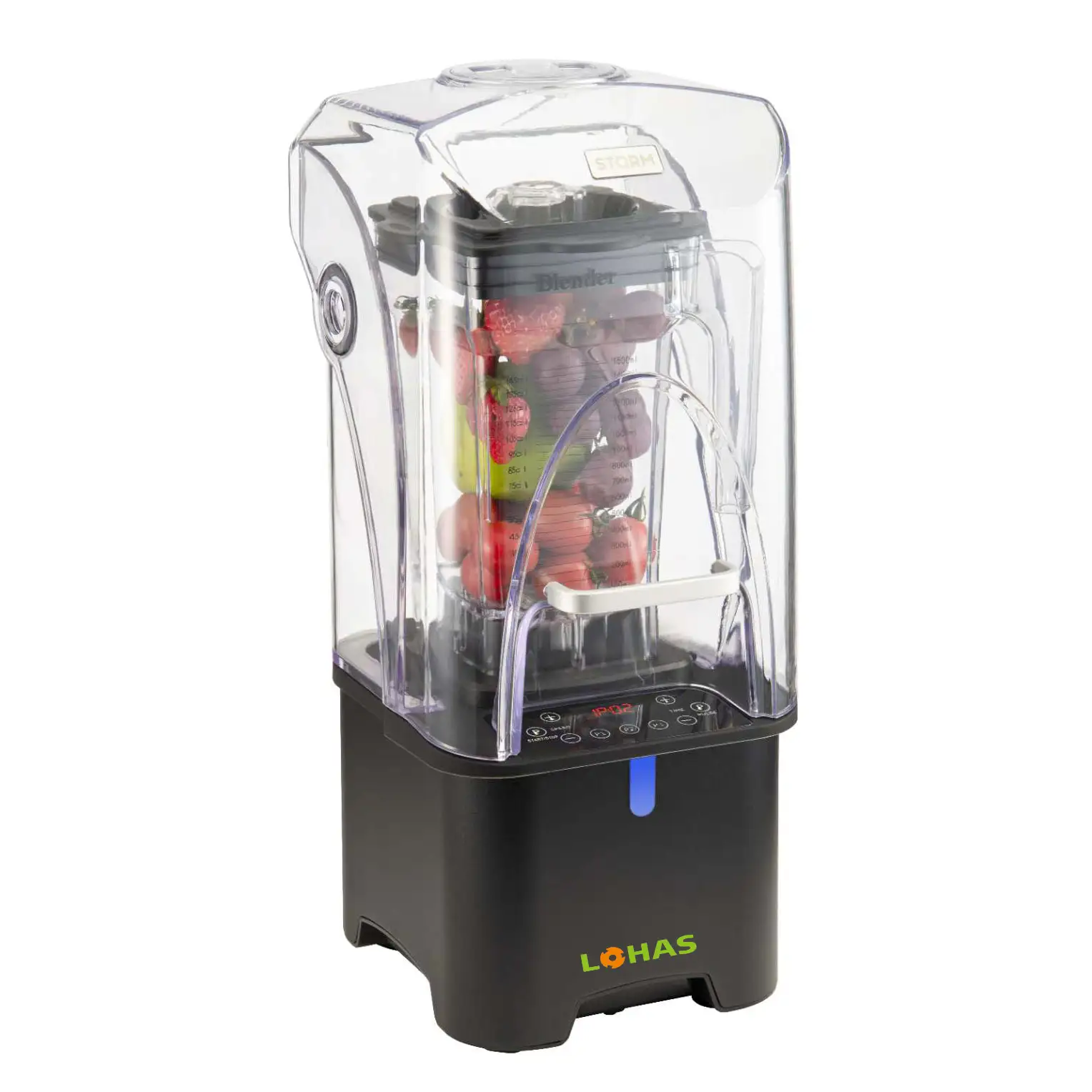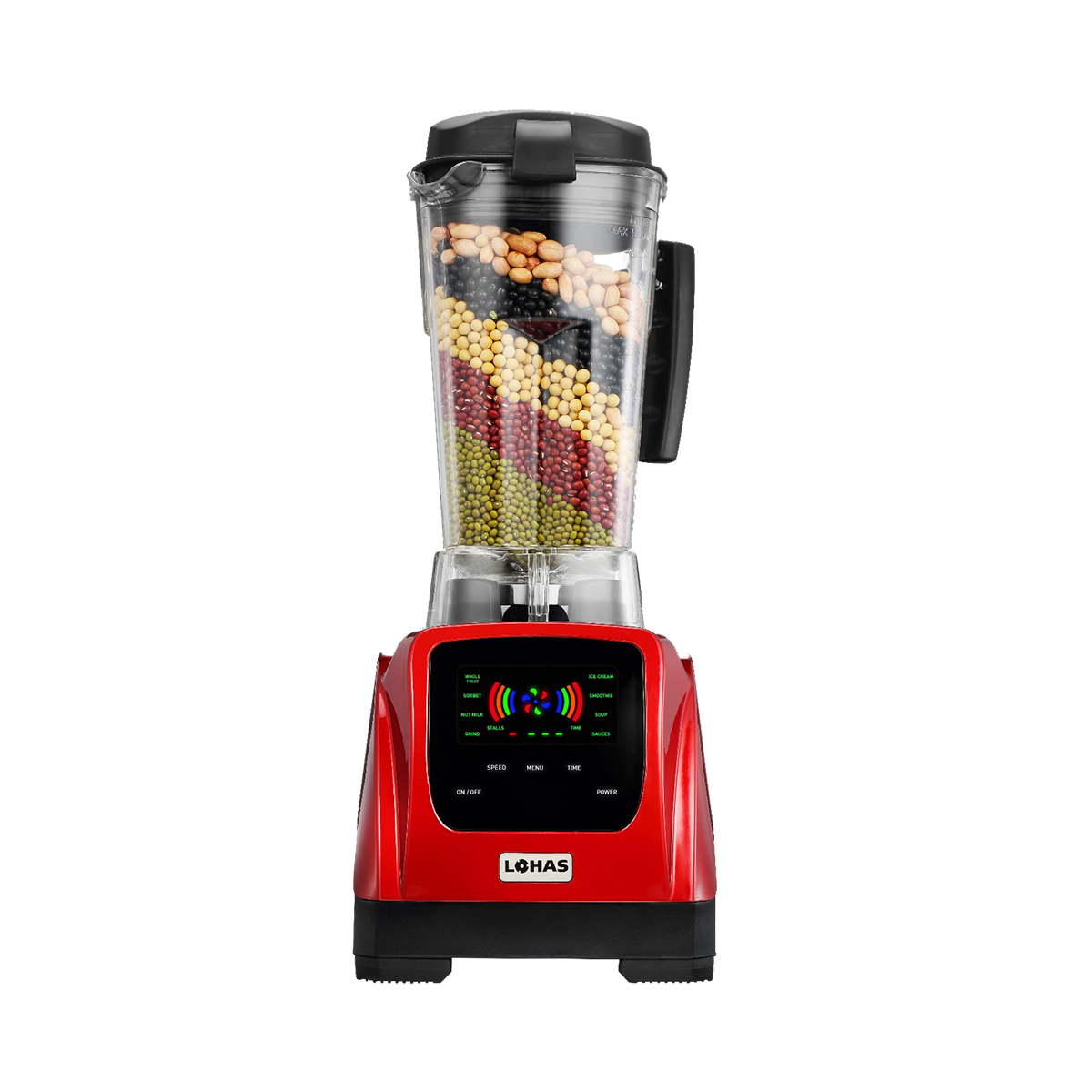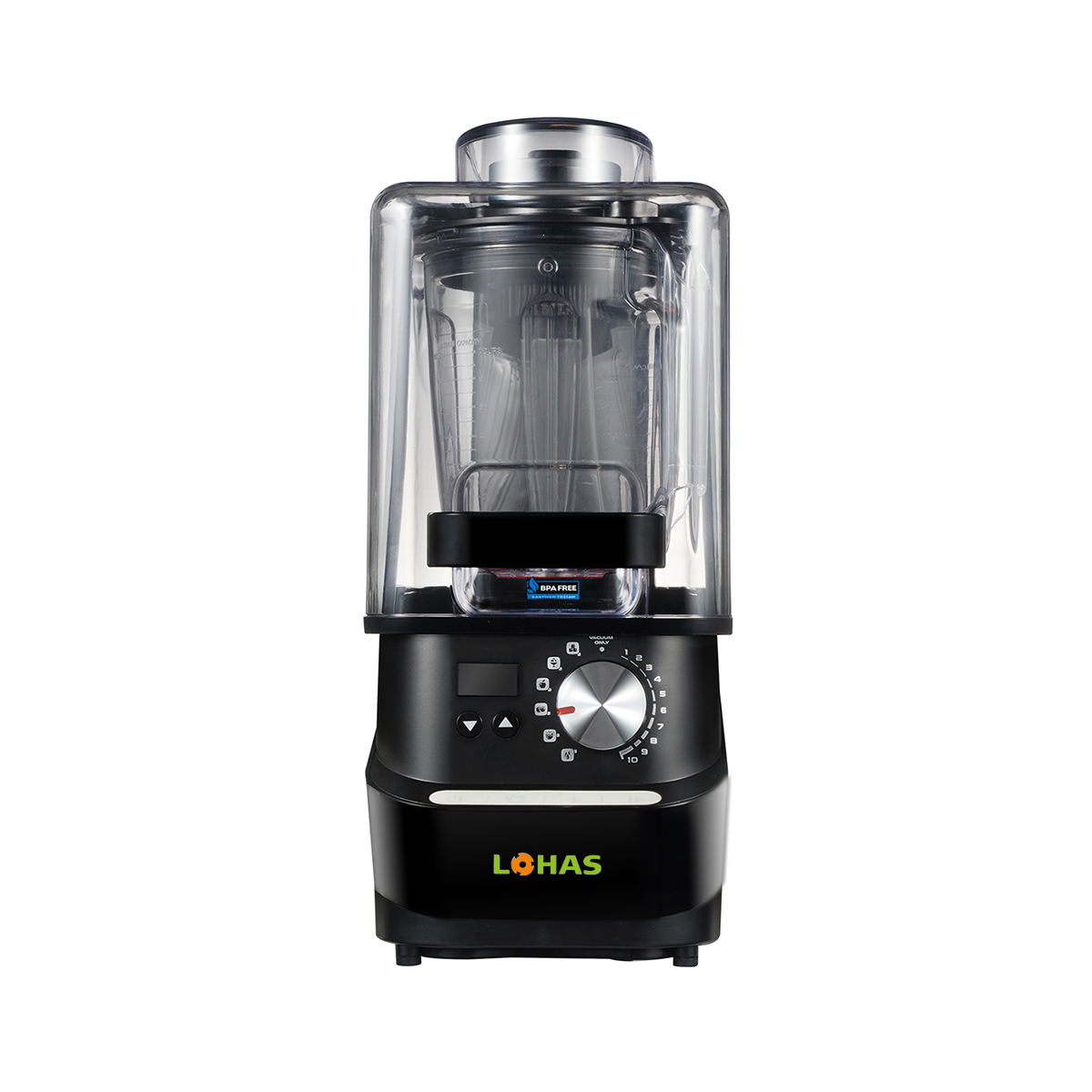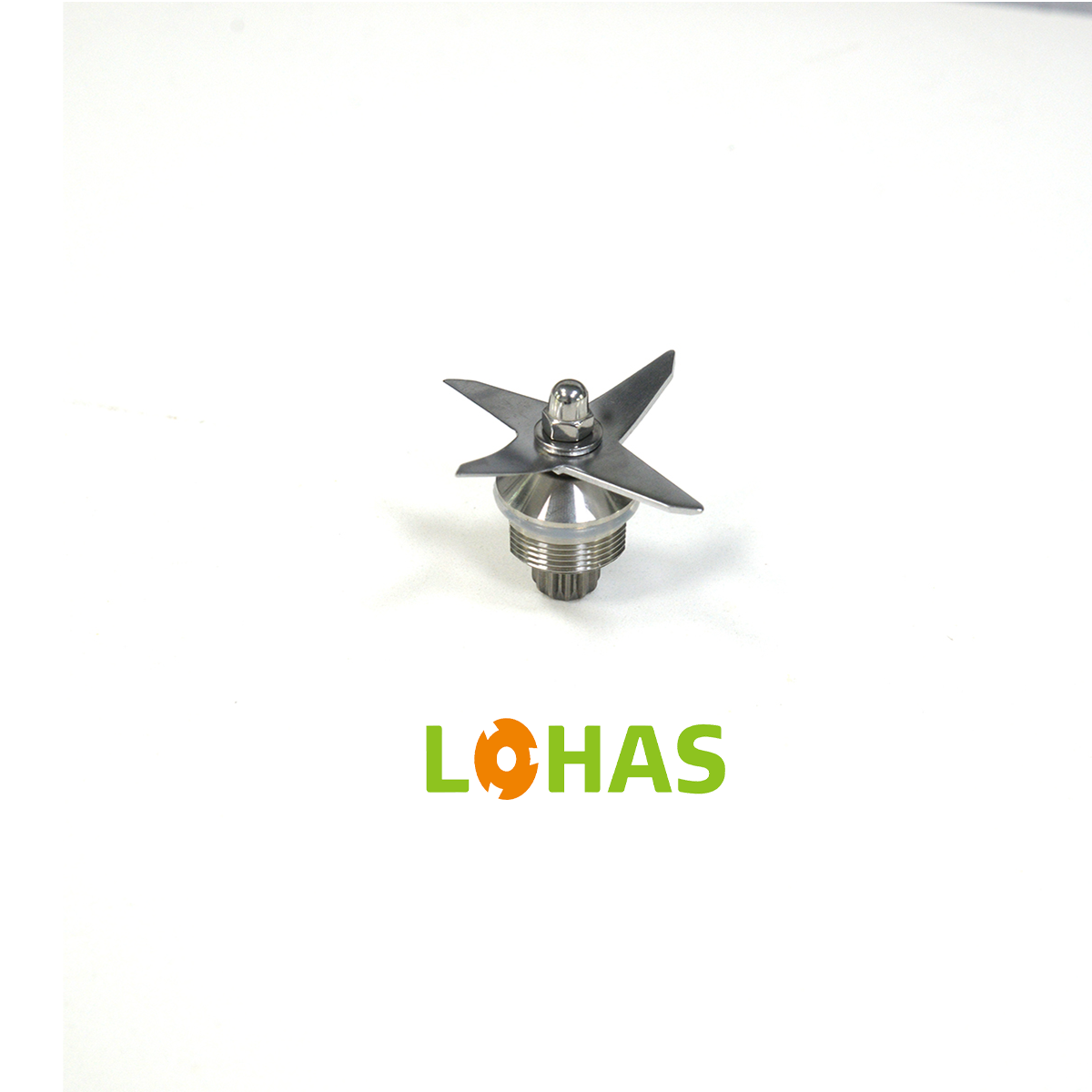पेशेवर ब्लेंडिंग उपकरण के साथ व्यापार संचालन का रूपांतरण
खाद्य सेवा उद्योग लगातार विकसित हो रहा है, और इसके केंद्र में विश्वसनीय, कुशल उपकरणों की आवश्यकता होती है जो मांग वाले संचालन के साथ कदम मिला सकें। एक वाणिज्यिक ब्लेंडर आधुनिक रसोई की दक्षता के लिए एक महत्वपूर्ण स्तंभ के रूप में कार्य करता है, जो साधारण स्मूदी बनाने से कहीं आगे की क्षमताएं प्रदान करता है। चाहे आप एक व्यस्त रेस्तरां, जूस बार या कैटरिंग सेवा चला रहे हों, सही वाणिज्यिक ब्लेंडर को शामिल करने से आपकी खाद्य तैयारी प्रक्रियाओं में क्रांति लाई जा सकती है और आपकी संचालन दक्षता में महत्वपूर्ण वृद्धि की जा सकती है।
आधुनिक कमर्शियल ब्लेंडर की आवश्यक विशेषताएं
बिजली और प्रदर्शन विनिर्देश
कमर्शियल ब्लेंडर में आमतौर पर 2 से 4 हॉर्सपावर तक की मजबूत मोटर्स का उपयोग किया जाता है, जो बड़ी मात्रा में सामग्री को तेजी से और लगातार संसाधित करने में सक्षम बनाता है। ये शक्तिशाली मशीनें सेकंडों में बर्फ को तोड़ने से लेकर कठोर सब्जियों को पीसने तक हर चीज को संभाल सकती हैं। उच्च मात्रा वाली स्थापनाओं के लिए एक महत्वपूर्ण विशेषता यह है कि शीर्ष समय के दौरान लगातार संचालन सुनिश्चित करने के लिए उनकी उत्कृष्ट मोटर डिजाइन गर्म होने के बिना काम कर सकती है।
व्यावसायिक ब्लेंडर में उन्नत ब्लेड प्रौद्योगिकी को शामिल किया जाता है जिसमें सटीक इंजीनियरिंग वाले स्टेनलेस स्टील घटक होते हैं, जो हजारों ब्लेंडिंग चक्रों के बाद भी अपनी धार बनाए रखते हैं। ब्लेड असेंबली को इष्टतम भंवर पैटर्न बनाने के लिए डिज़ाइन किया गया है, जो सामग्री के पूर्ण मिश्रण और चिकनी अंतिम उत्पाद को सुनिश्चित करता है उत्पाद हर बार।
स्थायित्व और निर्माण
आवासीय ब्लेंडर के विपरीत, व्यावसायिक ब्लेंडर को पेशेवर वातावरण में लगातार उपयोग का सामना करने के लिए औद्योगिक-ग्रेड सामग्री से बनाया जाता है। जार के निर्माण में आमतौर पर उच्च-प्रभाव, BPA-मुक्त सामग्री या स्टेनलेस स्टील का उपयोग किया जाता है, जो खरोंच का प्रतिरोध करने और अनगिनत बार धोने के बाद भी स्पष्टता बनाए रखने के लिए डिज़ाइन किया गया है। आधार आवास में मजबूत घटक शामिल होते हैं जो कम कंपन और संचालन के दौरान स्थिरता सुनिश्चित करते हैं।
पेशेवर-ग्रेड ब्लेंडर में ड्राइव सिस्टम में प्लास्टिक घटकों के बजाय धातु-से-धातु कनेक्शन शामिल होते हैं, जिससे उपकरण के आयुष्य में महत्वपूर्ण वृद्धि होती है। इस मजबूत निर्माण के कारण प्रतिस्थापन और मरम्मत की आवश्यकता कम होती है, जिससे दीर्घकालिक संचालन लागत में कमी आती है।
पेशेवर वातावरण में संचालन लाभ
समय और श्रम की बचत
अपने रसोई कार्यप्रवाह में एक व्यावसायिक ब्लेंडर को लागू करने से भोजन तैयार करने के समय में भारी कमी आ सकती है। ऐसे कार्य जिनके लिए आमतौर पर मैनुअल कटिंग या कई चरणों की आवश्यकता होती है, केवल कुछ सेकंड में पूरे किए जा सकते हैं। उदाहरण के लिए, सूप के आधार, सॉस या प्यूरी के बड़े बैच बनाना अब एकल चरण की प्रक्रिया बन जाता है, जिससे कर्मचारी अन्य महत्वपूर्ण कार्यों पर ध्यान केंद्रित कर सकते हैं।
आधुनिक व्यावसायिक ब्लेंडर में पाए जाने वाले प्रीसेट प्रोग्रामिंग फीचर्स लगातार ऑपरेटर की देखरेख के बिना ही सुसंगत परिणाम प्राप्त करने में सक्षम बनाते हैं। कर्मचारी एक ब्लेंडिंग चक्र की शुरुआत कर सकते हैं और अन्य कार्यों में लग जाते हैं, यह जानते हुए कि मशीन हर बार अपना काम पूरा कर देगी। इस स्वचालन से न केवल मूल्यवान श्रम घंटों की बचत होती है, बल्कि उत्पाद की गुणवत्ता में भी स्थिरता बनी रहती है।
मेनू विस्तार के अवसर
उच्च प्रदर्शन वाला व्यावसायिक ब्लेंडर मेनू नवाचार के लिए नई संभावनाएं खोलता है। रेशेदार सब्जी प्यूरी से लेकर सही ढंग से इमल्सीकृत ड्रेसिंग तक, इन मशीनों की बहुमुखी प्रकृति व्यवसायों को रसोई के संचालन में महत्वपूर्ण जटिलता जोड़े बिना अपनी पेशकश का विस्तार करने की अनुमति देती है। प्रतिष्ठान आसानी से स्वस्थ स्मूथी बाउल, पौधे-आधारित सॉस और रचनात्मक पेय विकल्प जैसे ट्रेंडिंग आइटम शामिल कर सकते हैं।
जमे हुए सामग्री को तेजी से संसाधित करने की क्षमता व्यवसायों को सीज़नल विशेषताएँ और साल भर ठंडे पेय पदार्थ प्रदान करने में सक्षम बनाती है। इस तरह की मेनू लचीलापन नए ग्राहकों को आकर्षित करने और नियमित ग्राहकों की रुचि बनाए रखने में मदद करता है, जिससे राजस्व स्रोतों में वृद्धि हो सकती है।

लागत के निहितार्थ और निवेश पर आय
प्रारंभिक निवेश पर विचार
हालांकि व्यावसायिक ब्लेंडर की प्रारंभिक लागत घरेलू मॉडल की तुलना में अधिक हो सकती है, लेकिन सुधरी हुई दक्षता और कम अपशिष्ट के माध्यम से यह निवेश आमतौर पर स्वयं को साबित कर देता है। पेशेवर-ग्रेड ब्लेंडर सामग्री को अधिक पूर्णता से संसाधित करते हैं, कच्ची सामग्री से अधिकतम मूल्य निकालते हैं और भोजन अपशिष्ट कम करते हैं। ब्लेंडिंग पैरामीटर को सटीक रूप से नियंत्रित करने की क्षमता भाग के आकार और सामग्री अनुपात को स्थिर रखने में भी मदद करती है।
निवेश पर रिटर्न की गणना करते समय, व्यवसायों को केवल खरीद मूल्य के बजाय श्रम लागत में संभावित बचत, कम भोजन अपशिष्ट और बढ़ी हुई उत्पादन क्षमता पर भी विचार करना चाहिए। कई प्रतिष्ठानों को पाया जाता है कि उनका व्यावसायिक ब्लेंडर लागू होने के कुछ महीनों के भीतर लाभदायक हो जाता है।
दीर्घकालिक आर्थिक लाभ
व्यावसायिक ब्लेंडर की टिकाऊपन का अर्थ है महत्वपूर्ण दीर्घकालिक बचत। जहां उपभोक्ता-श्रेणी के ब्लेंडर को पेशेवर सेटिंग में हर एक या दो साल में बदलने की आवश्यकता हो सकती है, वहीं एक गुणवत्तापूर्ण व्यावसायिक ब्लेंडर भारी उपयोग के तहत भी कई वर्षों तक विश्वसनीय ढंग से काम कर सकता है। इस लंबे जीवनकाल के साथ-साथ कम रखरखाव आवश्यकताओं के कारण समय के साथ उपकरण प्रतिस्थापन लागत में कमी आती है।
इसके अतिरिक्त, व्यावसायिक ब्लेंडर द्वारा उत्पादित उत्पादों की एकरूपता और गुणवत्ता व्यवसायों को प्रीमियम मूल्य निर्धारण और ग्राहक संतुष्टि बनाए रखने में मदद कर सकती है। घर पर आसानी से प्रतिकृत न की जा सकने वाली विशिष्ट वस्तुएं बनाने की क्षमता मेनू में मूल्य जोड़ती है और उच्च मूल्य बिंदुओं को उचित ठहराती है।
अक्सर पूछे जाने वाले प्रश्न
एक व्यावसायिक ब्लेंडर, आवासीय ब्लेंडर से कैसे भिन्न होता है?
व्यावसायिक ब्लेंडर में अधिक शक्तिशाली मोटर्स, मजबूत निर्माण सामग्री और उच्च मात्रा में उपयोग के लिए डिज़ाइन की गई उन्नत प्रोग्रामिंग क्षमताएं होती हैं। घरेलू मॉडल की तुलना में इनमें आमतौर पर अधिक टिकाऊपन, तेज प्रसंस्करण समय और अधिक सुसंगत परिणाम प्राप्त होते हैं।
एक व्यावसायिक ब्लेंडर के लिए किस प्रकार के रखरखाव की आवश्यकता होती है?
नियमित रखरखाव में जार और ब्लेड की दैनिक सफाई, सील और ड्राइव घटकों का नियमित निरीक्षण, और आवश्यकतानुसार ब्लेड को तेज करना या बदलना शामिल है। निर्माता द्वारा दिए गए रोकथाम रखरखाव दिशानिर्देशों का पालन करने से उपकरण के जीवनकाल में काफी वृद्धि हो सकती है।
क्या एक व्यावसायिक ब्लेंडर गर्म सामग्री को संभाल सकता है?
कई व्यावसायिक ब्लेंडर गर्म सामग्री को सुरक्षित ढंग से संसाधित करने के लिए डिज़ाइन किए गए होते हैं, हालांकि तापमान सीमा और भरने के स्तर के लिए विशिष्ट दिशानिर्देशों का पालन करना आवश्यक है। कुछ मॉडल में गर्म भोजन प्रसंस्करण के लिए विशेष सुविधाएं शामिल होती हैं, जैसे वेंटेड ढक्कन और तापमान-प्रतिरोधी कंटेनर।







